Richard Brunel has transposed the action to May ’68. With its assembly-line workers in car factories, youth demonstrations with banners and placards, and women’s demands for sexual freedom and political ambition.
Marie-Aude Roux, Le Monde
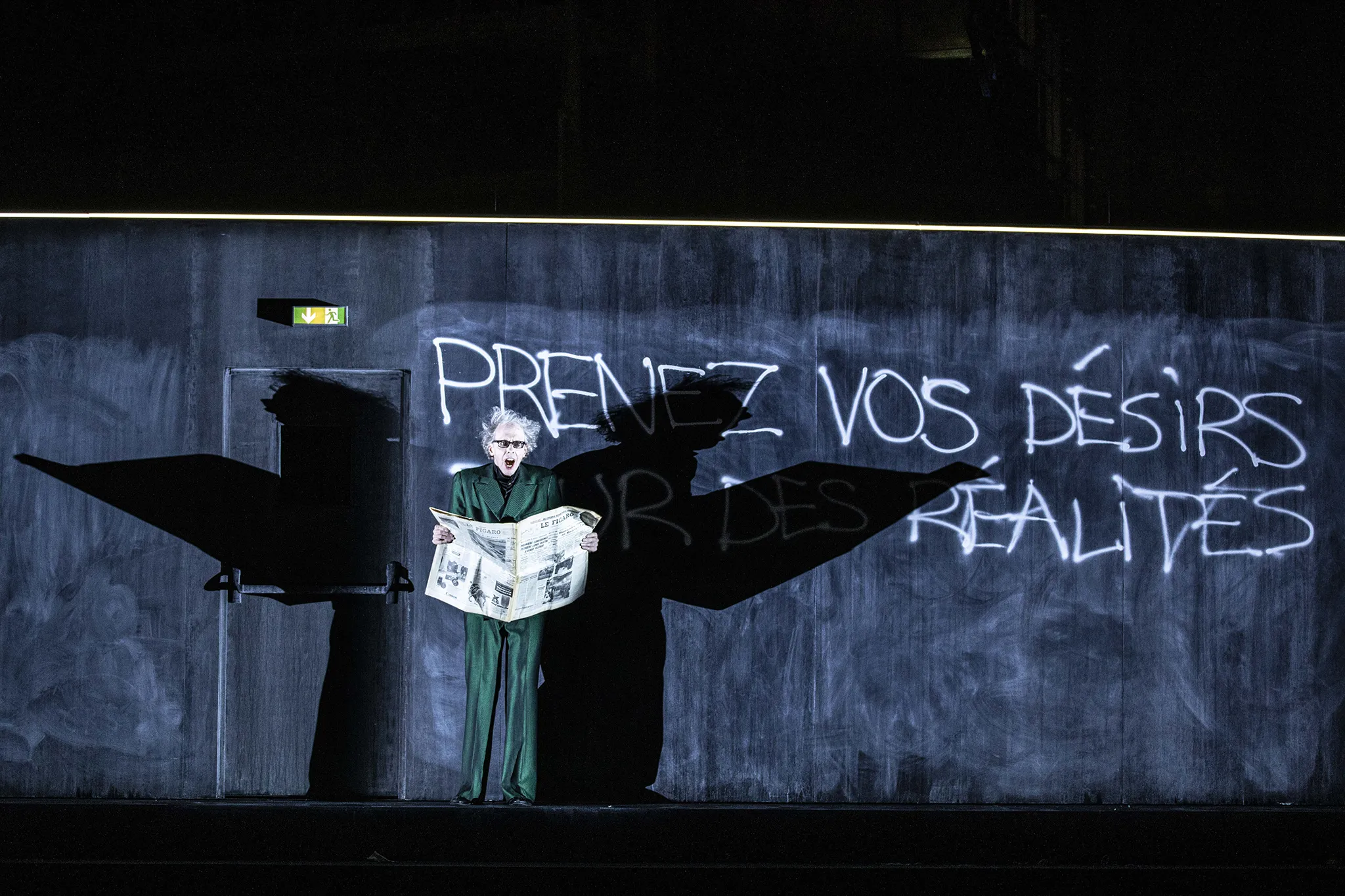
Regarding Richard Brunel’s staging, the transposition he proposes works quite well. Starting from the premise that audiences now know almost nothing about the “Directoire”, it shifts the action to another revolution, the May ’68 movement, with its protesters and reactionaries.
Laurent Bury, Concert-Classic
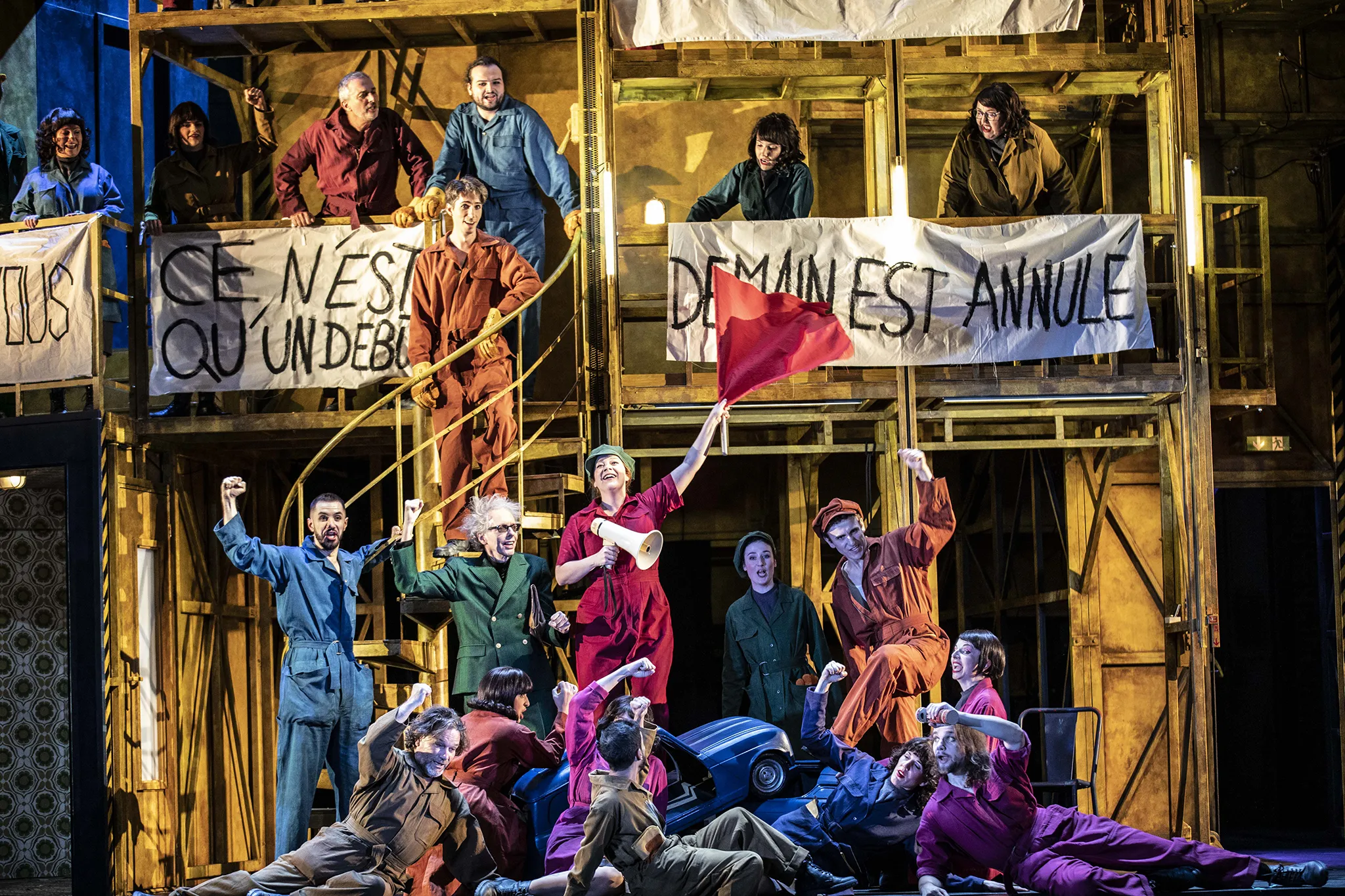
The idea of transposing the action to May ’68 was in itself a clever one. And Bruno de Lavenère’s beautiful sets and costumes play humorously on the aesthetics of the sixties.
Nicolas d’Estienne d’Orves, Transfuge
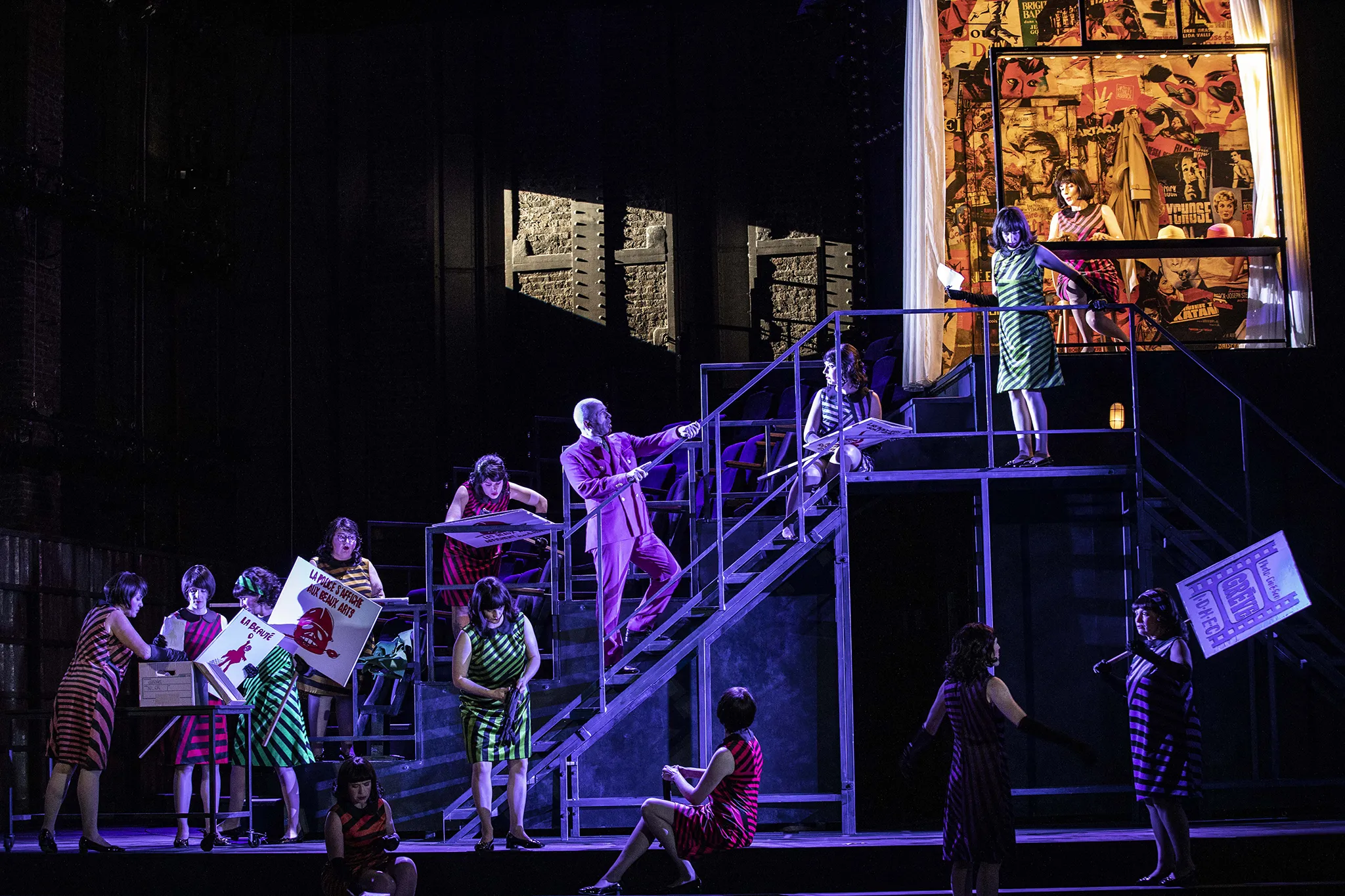
Madame Angot’s daughter” opens the show in a white bride’s dress, and closes it in a red student revolutionary jumpsuit, refusing, contrary to the libretto, to give in to Pitou and marry the brave Pomponnet, on the grounds that she belongs only to herself.
Marie-Aude Roux, Le Monde
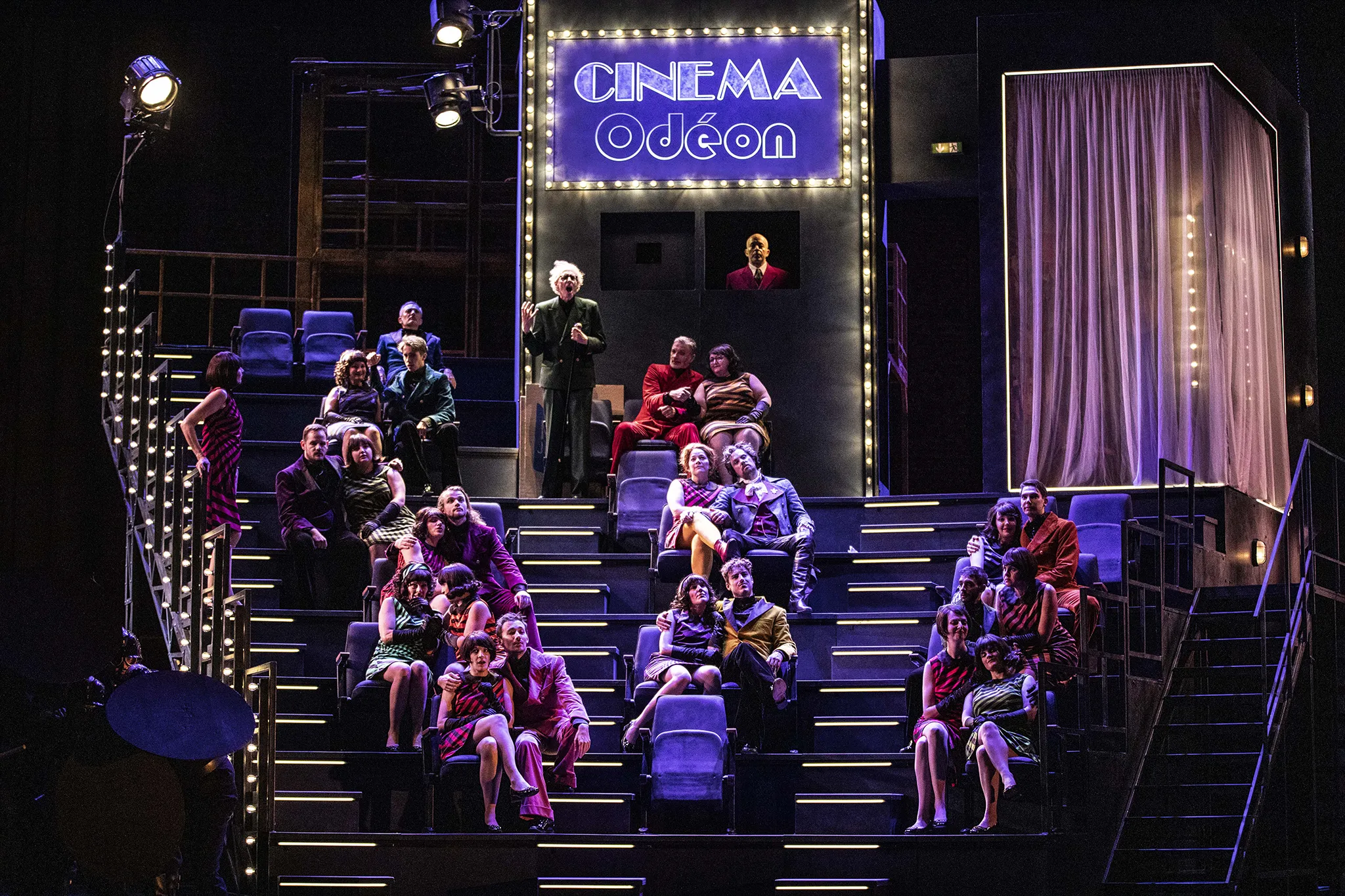
Richard Brunel decided to set the plot in May ’68, which makes sense in many ways (both periods combine political tumult, liberation of morals, feminist demands, artistic ferment, etc.).
Damien Dutilleul, Olyrix
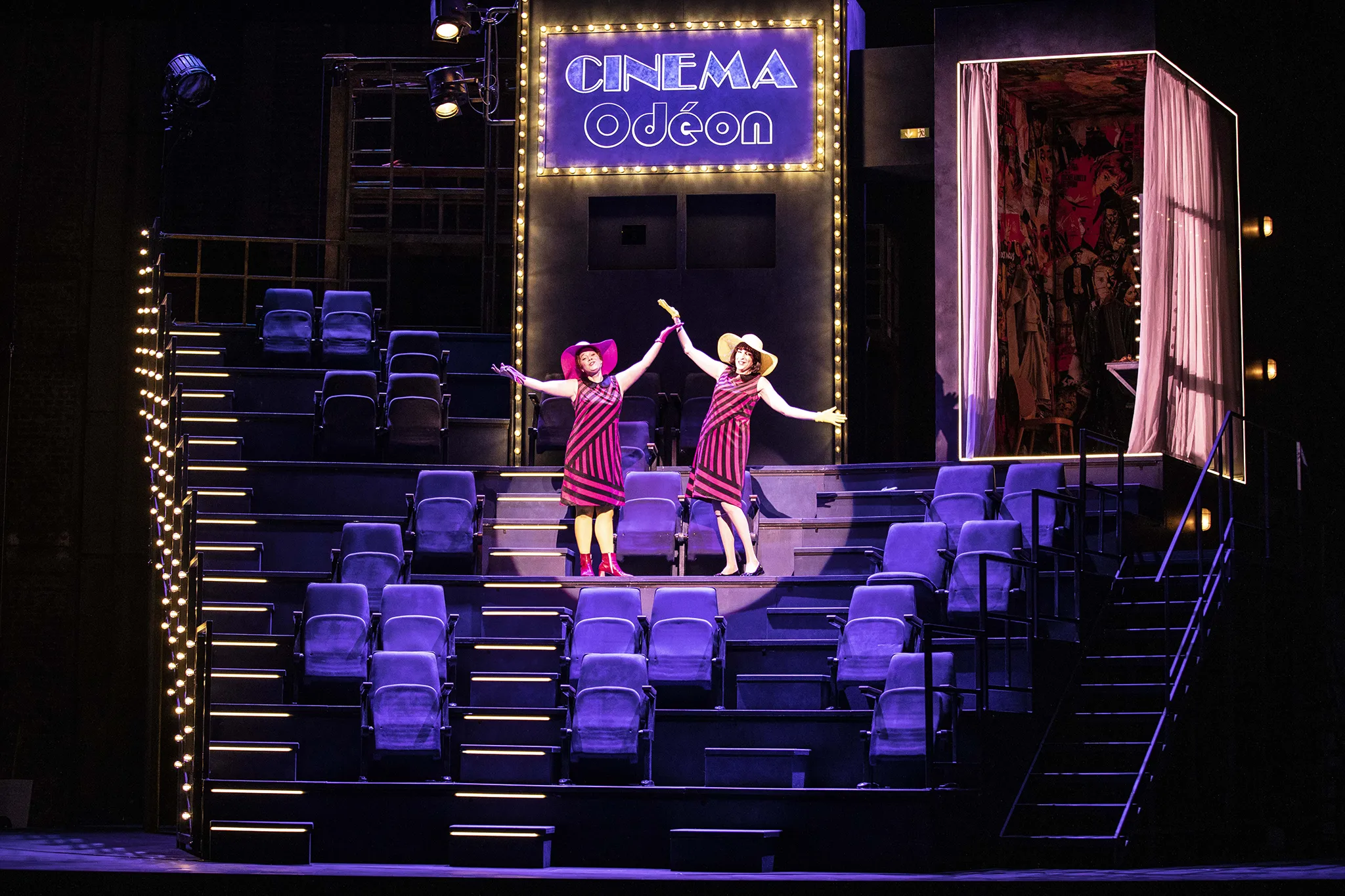
All this is packed with amusing references, notably to the cinema of the period (Jacques Demy’s Les Demoiselles de Rochefort). And you can’t help but enjoy it, because as we’ve said, it’s a charming show.
Nicolas d’Estienne d’Orves, Transfuge
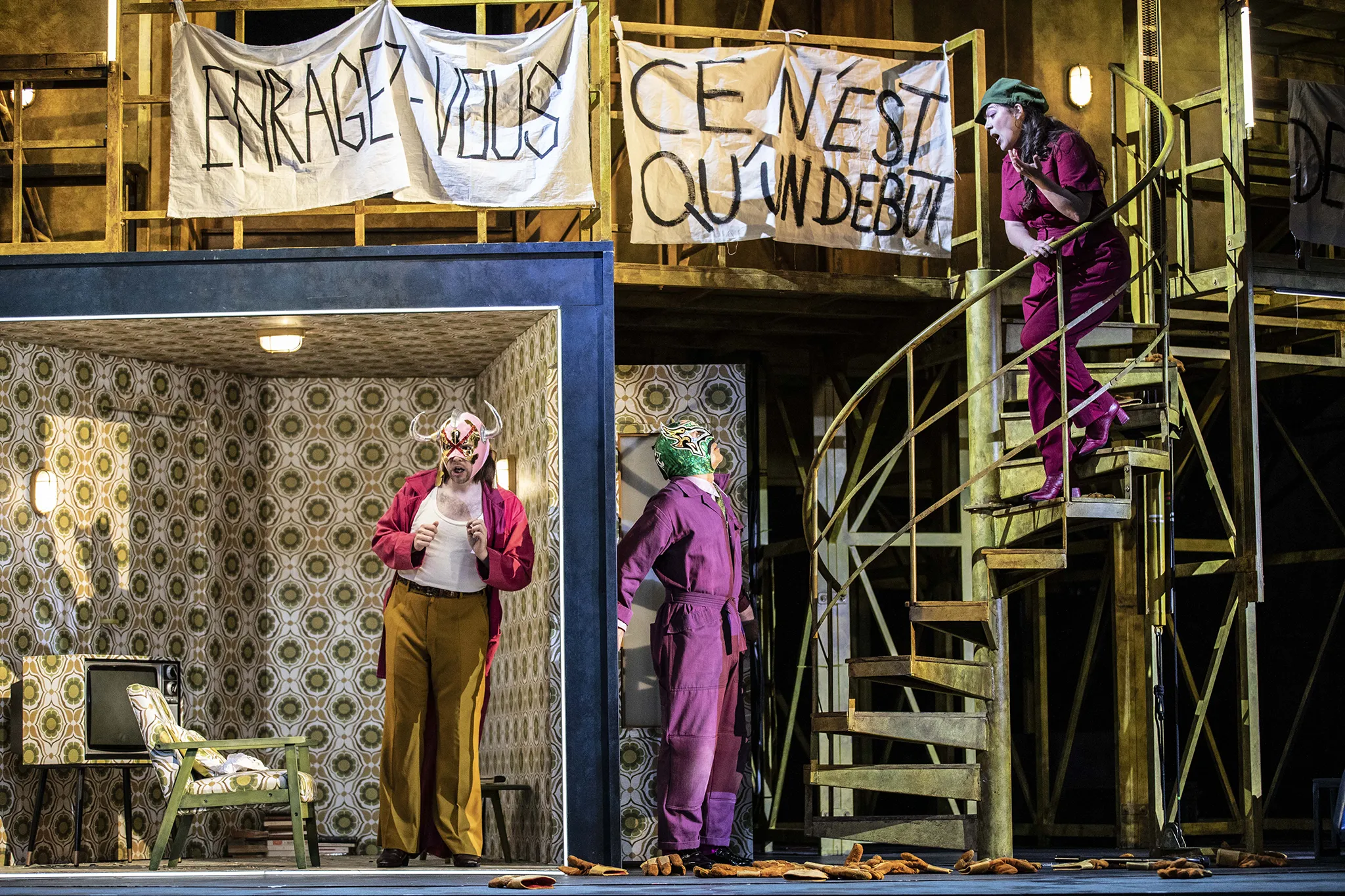
Bruno de Lavenère’s ingenious turning structure transforms Les Halles into a Renault factory on strike, where Larivaudière is the boss, while Mademoiselle Lange’s apartments (here an actress crossing paths with Jeanne Moreau à la Catherine Deneuve from Les Demoiselles de Rochefort) and Belleville’s gardens are transformed into a Nouvelle Vague cinema.
Damien Dutilleul, Olyrix
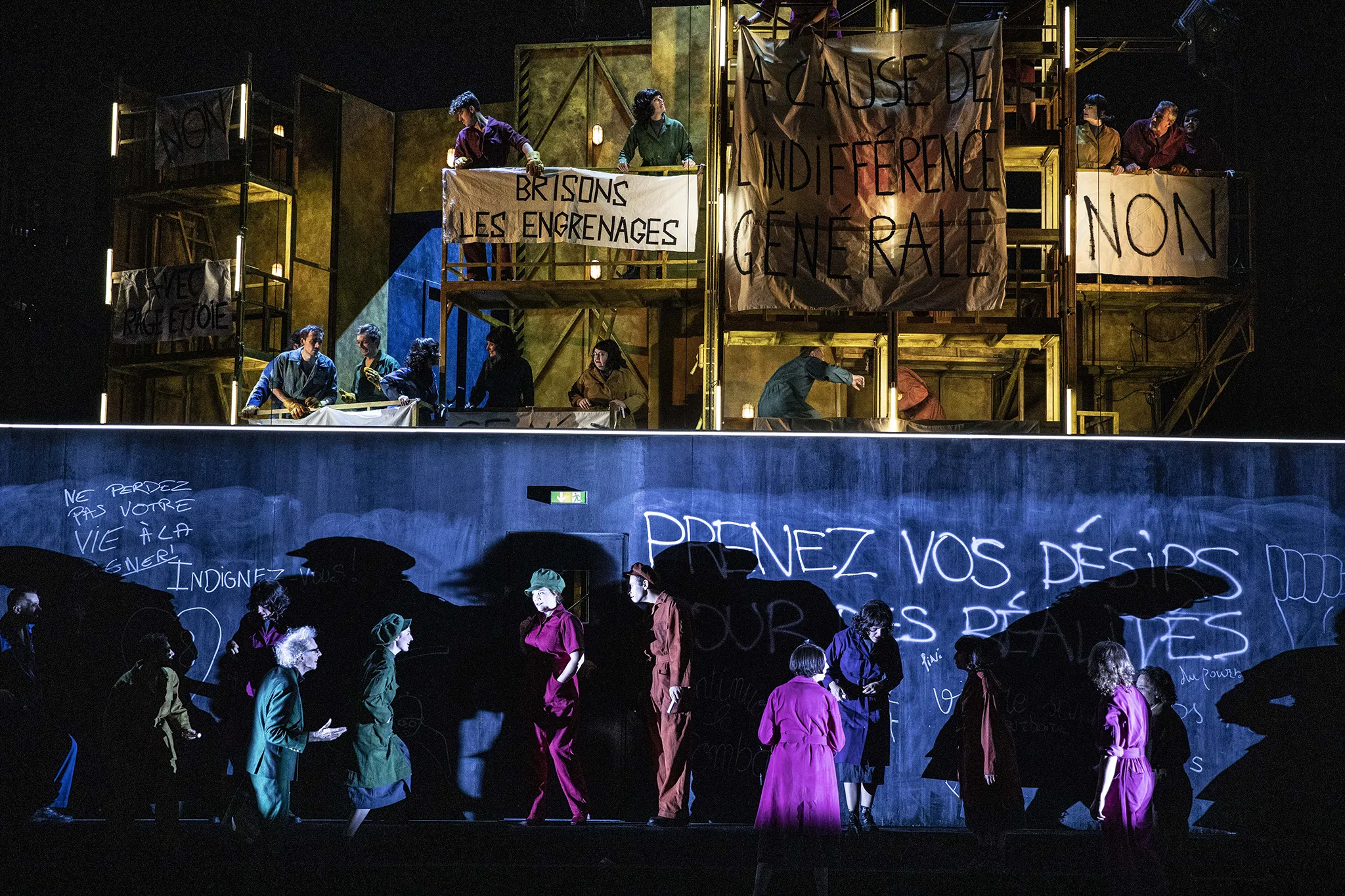
Richard Brunel’s show is lively, dynamic and often funny.
Philippe Venturini, Les Echos
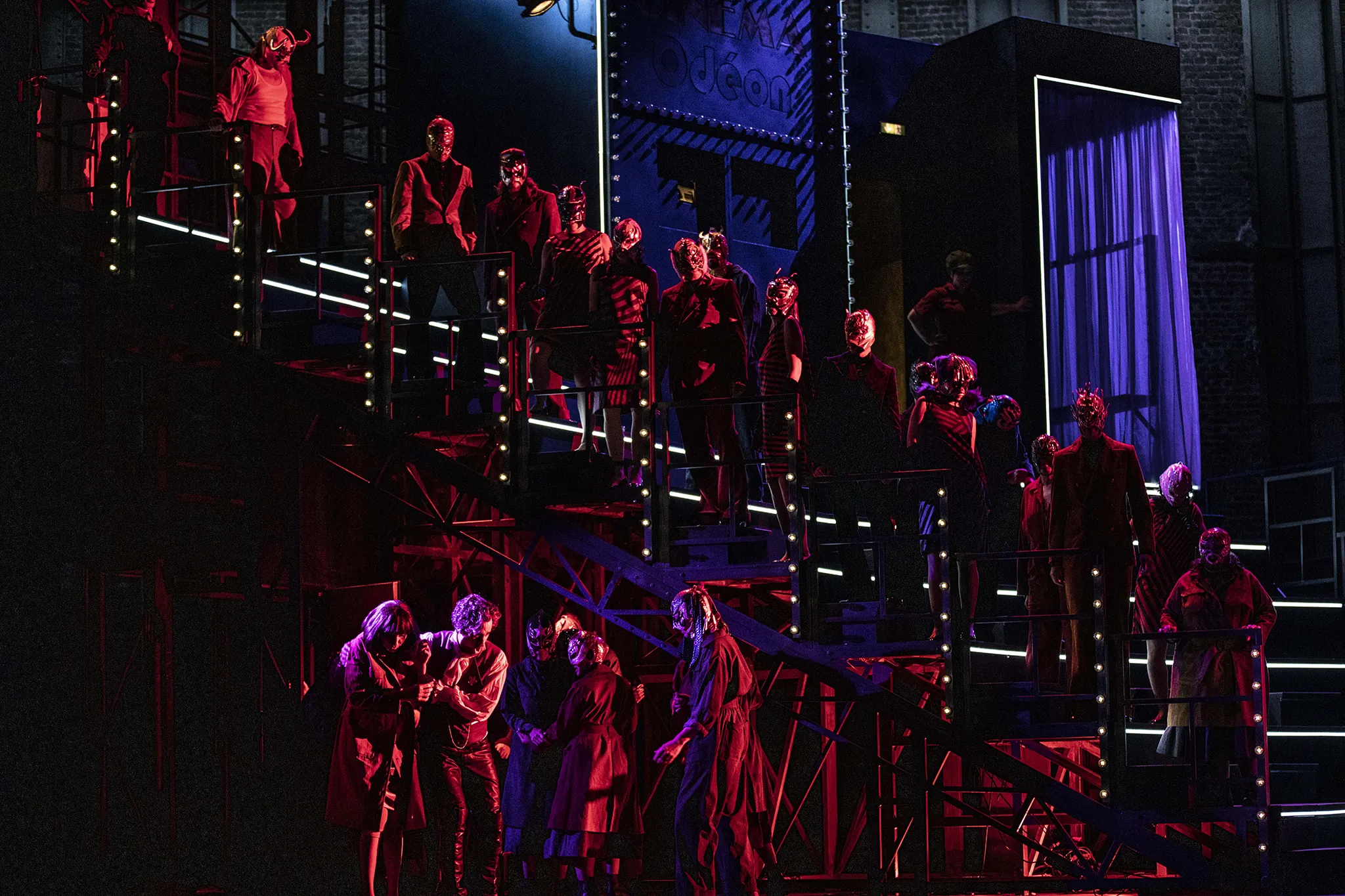
The modernity of certain lines and the reuse of certain Sixties slogans also contribute to the audience’s entertainment.
Damien Dutilleul, Olyrix
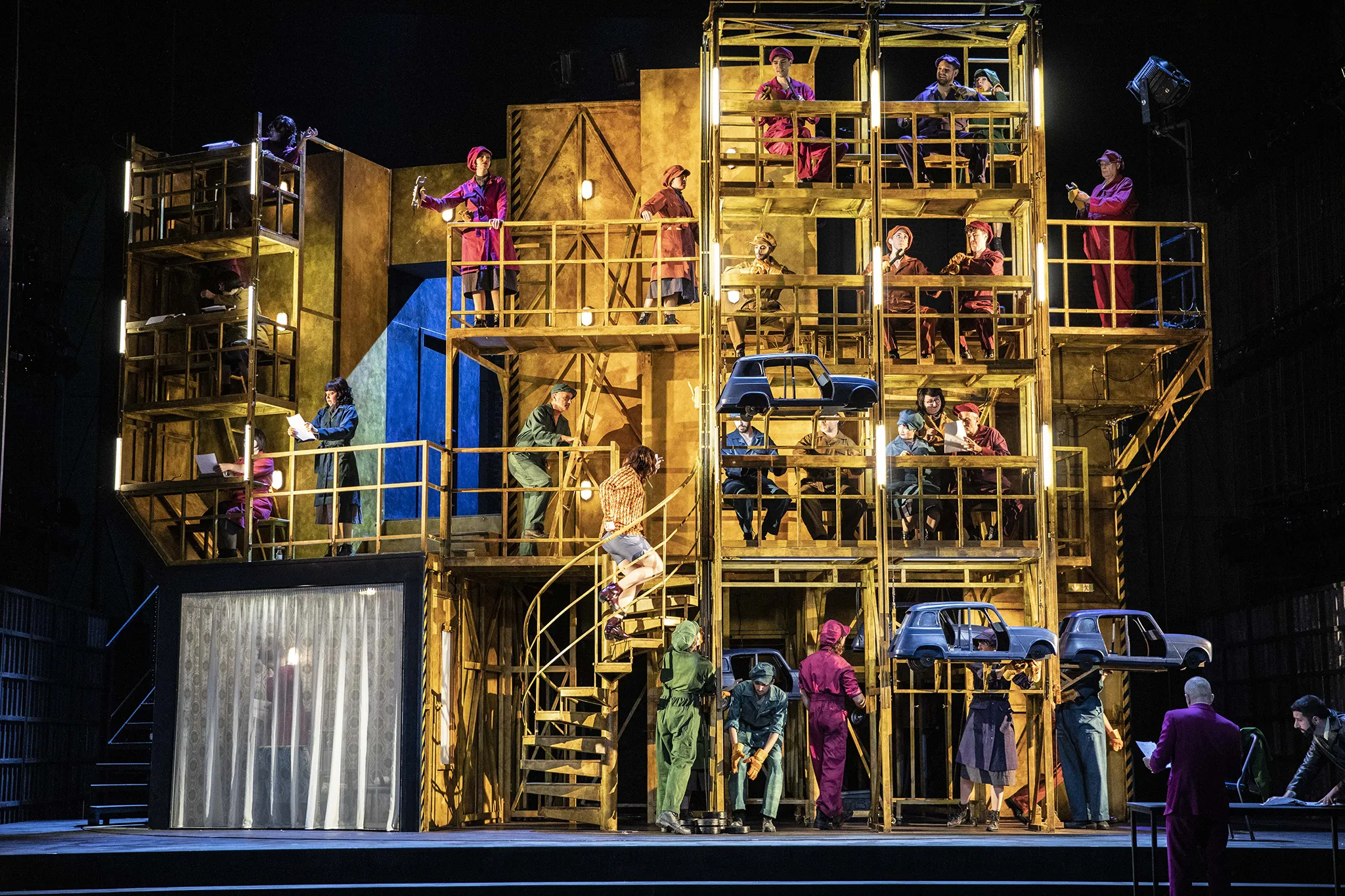
A fine team of singers who take obvious pleasure in entertaining. Hélène Guilmette plays a playful, spontaneous Clairette Angot, with clear diction and supple phrasing. Pierre Derhet stands out as a model, a tenor of clear timbre, finely articulated words and obvious presence. Matthieu Lécroart deserves the same praise as Larivaudière, a financier with a complicated love life.
Philippe Venturini, Les échos
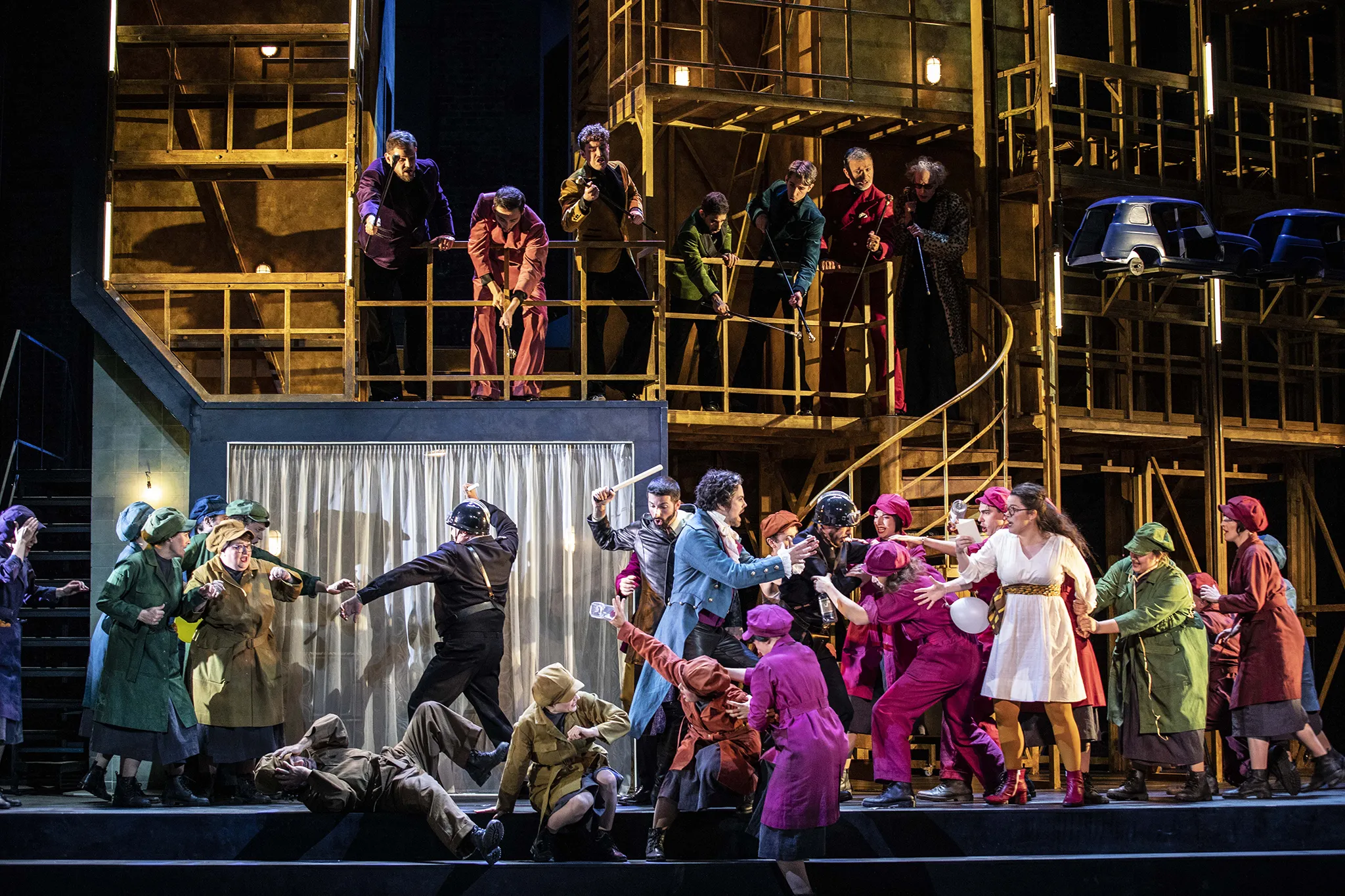
Richard Brunel chooses to let the wind of revolt blow over everyone. He sets the action in May 1968, agitating class struggle and liberation of morals.
François Laurent, Diapason
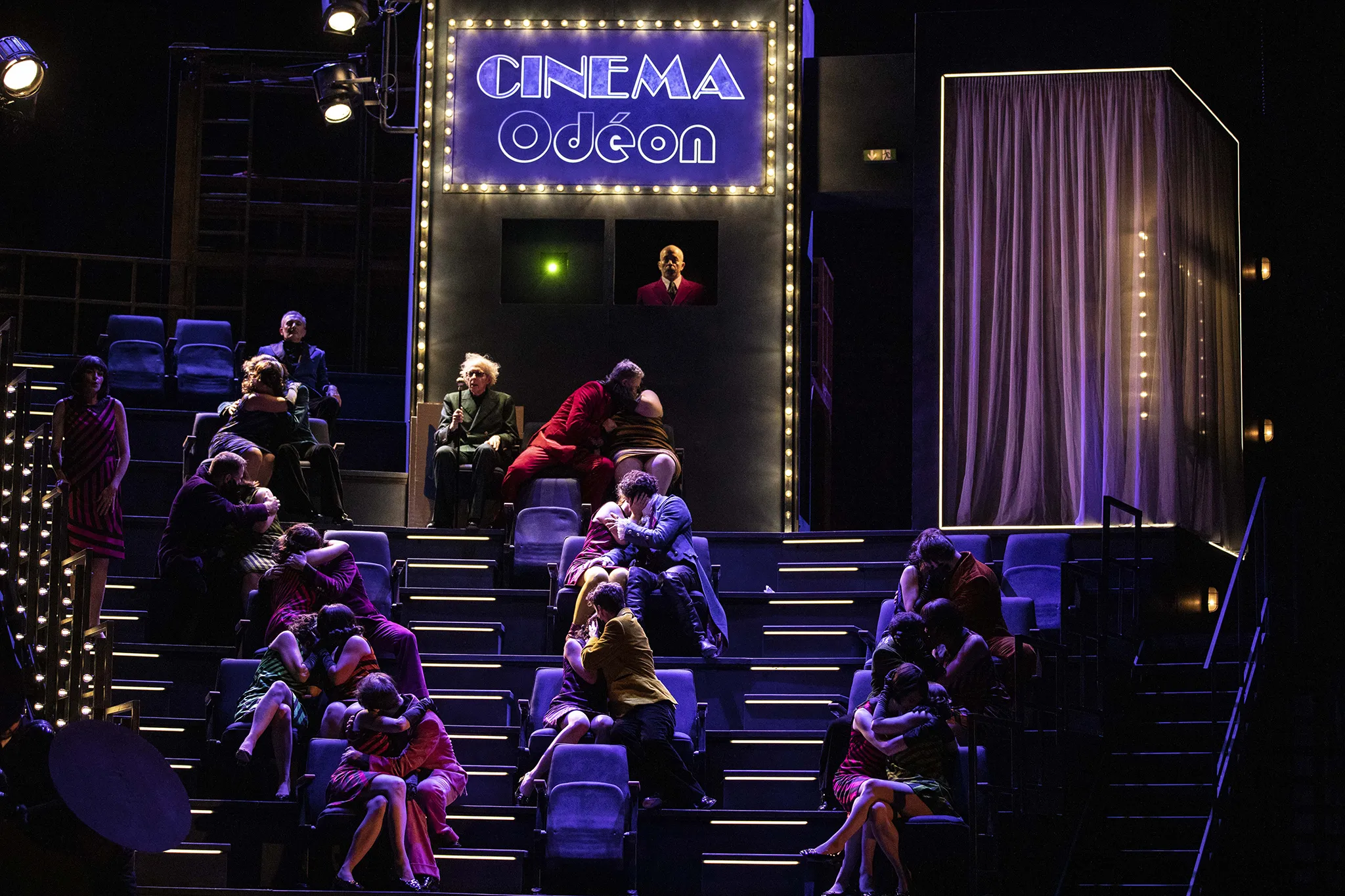
The “Incroyables” have nothing left to do in the midst of the chienlit, and it’s a clever solution to have replaced the fashionable grasseyement with the authentically Anglo-Saxon accent of an American actor (Geoffrey Carey) in the role of Trénitz.
Laurent Bury, Concert-Classic
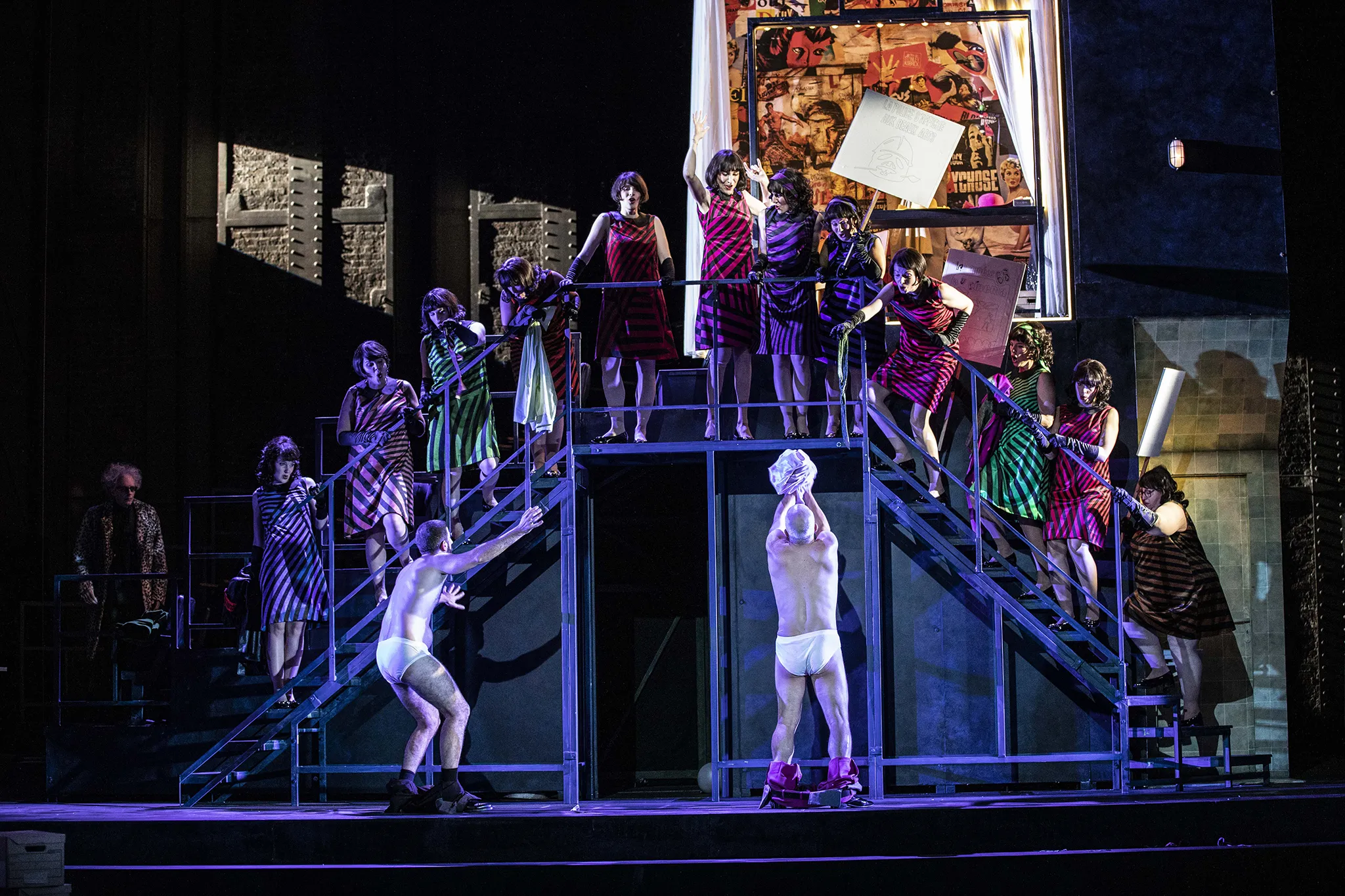
The Overture is played in front of a gray wall on which slogans will appear. The curtain rises on a pseudo-Renault factory on strike, where banners are hanging. In place of the Théâtre de l’Odéon, the center of the Events, the director substitutes the cinema of the same name. Act II takes place and ends when the CRS move the “occupiers” out of the darkened theater where Mademoiselle Lange seems at home. The plot remains legible and the characters real.
François Laurent, Diapason
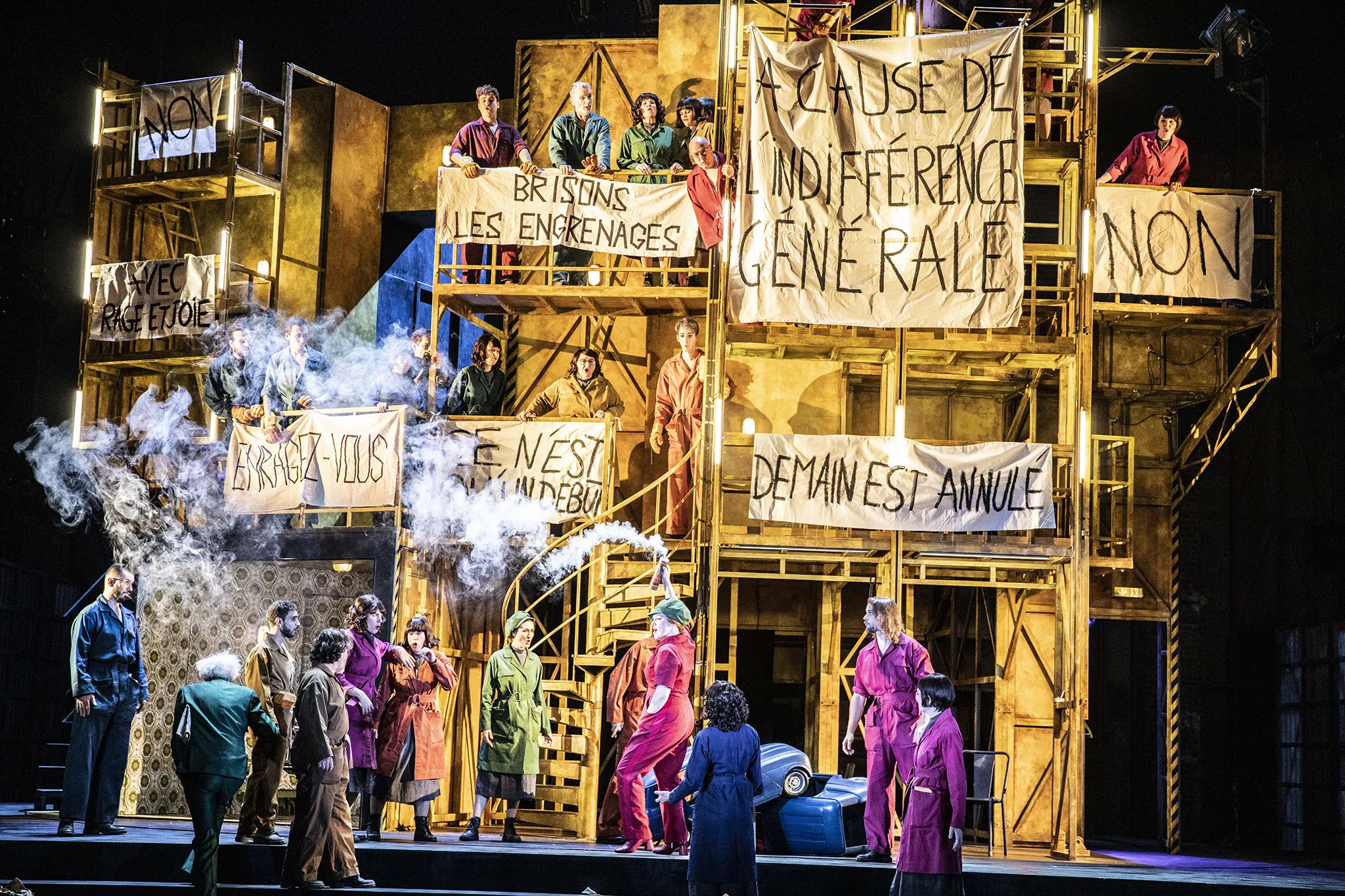
Richard Brunel has transposed the action to May ’68. With its assembly-line workers in car factories, youth demonstrations with banners and placards, and women’s demands for sexual freedom and political ambition.
Marie-Aude Roux, Le Monde
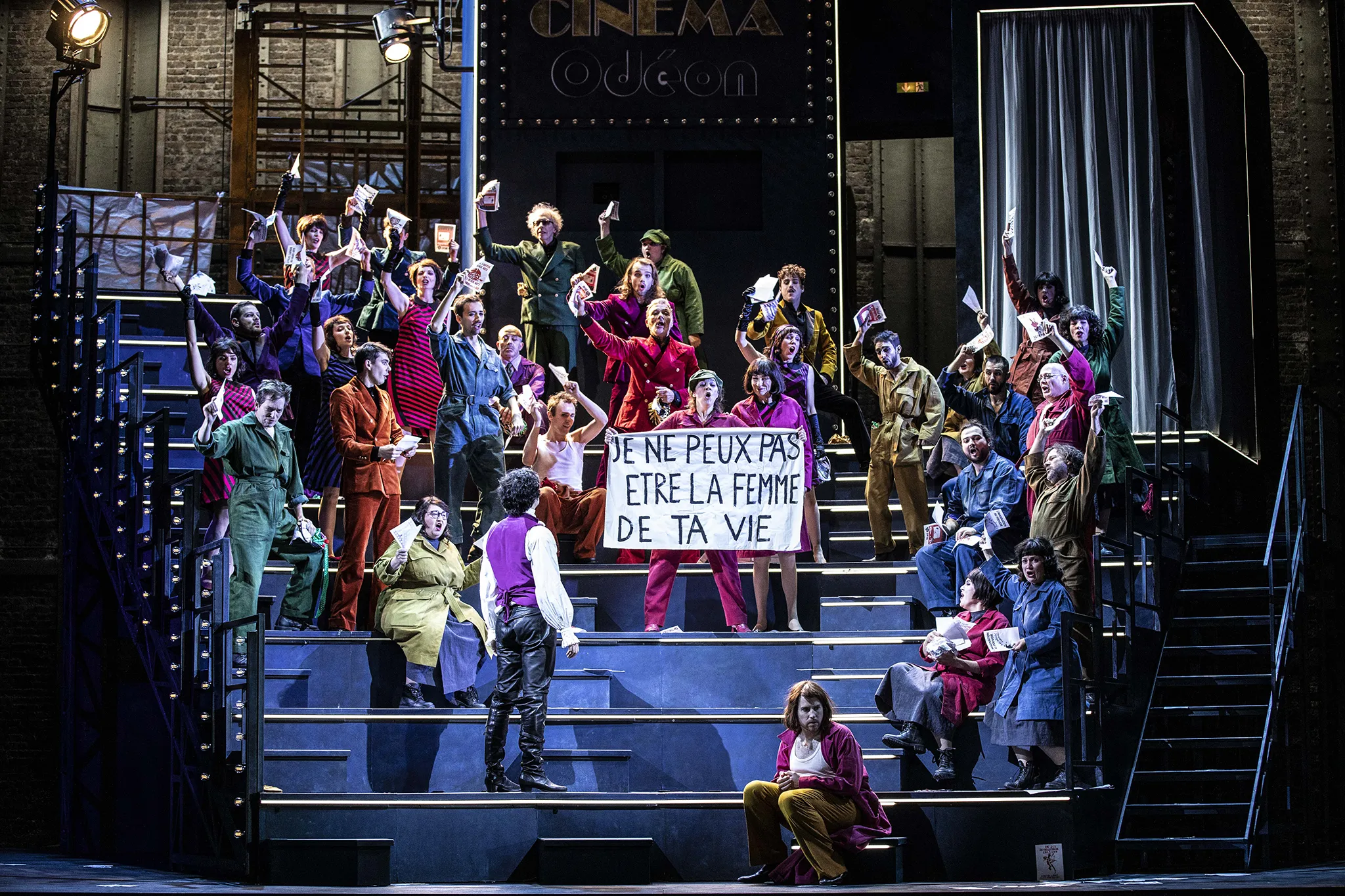
Madame Angot’s daughter (La fille de Madame Angot)
Charles Lecocq
Comic opera in three acts. Libretto by Clairville, Paul Siraudin and Victor Koning. Created at the Fantaisies-Parisiennes (Brussels) on December 4, 1872.
Music Director Hervé Niquet
Director Richard Brunel
Dramaturg Catherine Ailloud-Nicolas
Set and costume designer Bruno De Lavenère
Lighting designer Laurent Castaingt
Choreography Maxime Thomas
Director assistant Ester Pieri
Musical assistant Sammy El Ghadad
Junior director assistant Sophie Planté
Junior director assistant Barthélémy Fortier
Costume designer assistant Claire Schwartz
Lighting designer assistant Thomas Giubergia
Vocal Coaches Marine Thoreau La Salle, Héloïse Bertrand-Oleari
Cast
Hélène Guilmette,
Véronique Gens,
Pierre Derhet,
Julien Behr,
Matthieu Lécroart,
Floriane Derthe,
Antoine Foulon,
Geoffrey Carey,
Matthieu Walendzik
François Pardailhe.
Chamber orchestra of Paris – Le Concert Spirituel Choir
Produced by Opéra Comique – National Theatre
Coproduced by Palazetto BruZane, Opéra national de Lyon, Opéra Nice Côte d’Azur, Opéra Grand Avignon.